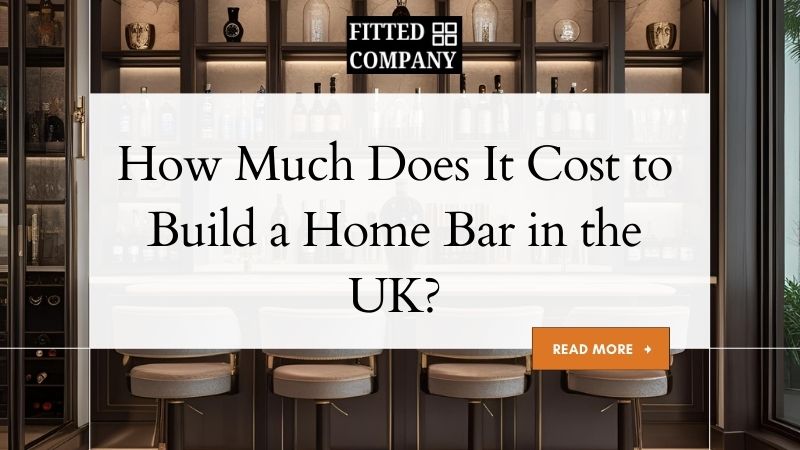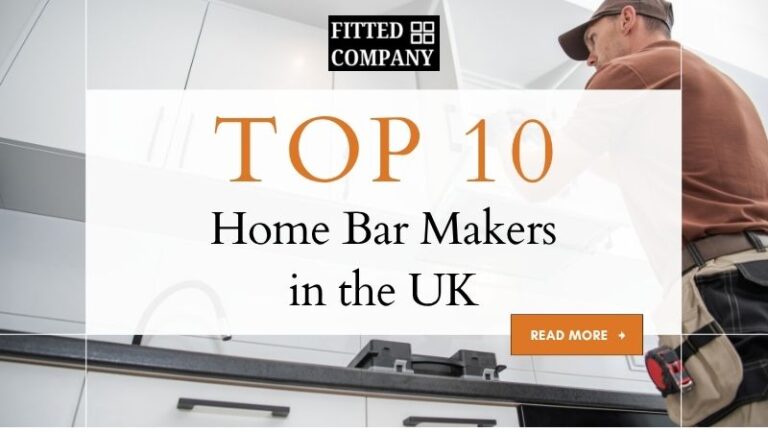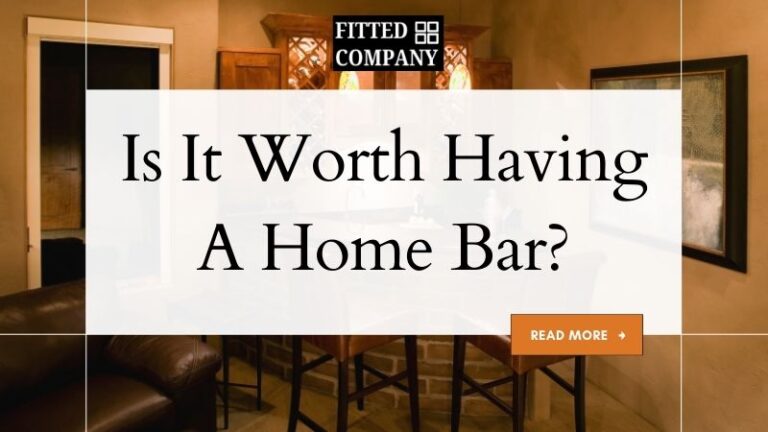How Much Does It Cost to Build a Home Bar in the UK?

The cost to build a home bar in the UK can vary widely depending on size, materials, and features. On average, the cost to build a basic home bar starts at around £1,000 and can go up to £5,000 or more for a more customised setup. Knowing this helps homeowners plan their budget and decide what kind of bar fits their needs.
The price depends on several factors, including the type of bar, the quality of materials, and whether professional installation is required. Some people choose simple, DIY options to keep costs down, while others prefer a more elaborate design with high-end appliances.
Understanding the main expenses involved can make it easier to choose the right options and avoid unexpected costs. This article breaks down typical costs and tips for creating a home bar that fits both style and budget.
Key Takeaways
- Home bar costs vary widely based on design and materials.
- Labour and installation significantly affect the final price.
- Planning carefully helps control expenses and meet needs.
Average Home Bar Costs in the UK
Building a home bar in the UK can vary widely in cost depending on size, style, and materials. People should expect basic setups to cost around a few hundred pounds, but could spend several thousand for custom designs. Factors like location and added features also impact pricing.
Typical Price Ranges
Most home bars start at around £300 to £1,000 for simple, ready-made kits or basic DIY builds. These often include shelving, a counter, and minimal seating. Mid-range bars, costing between £1,000 and £3,000, offer better materials such as hardwood, integrated lighting, and more storage.
High-end or luxury home bars with custom cabinets, professional installation, and special features like refrigeration or taps can cost £3,000 to £7,000 or more. Prices also rise if a bar needs to fit a unique space or includes electrical work.
Cost Influencing Factors
Materials have a big impact on the total cost. MDF or laminate bars are cheaper, while hardwood or stone surfaces increase prices. Size matters: bigger bars need more materials and space, raising costs.
Labour can make a difference. DIY reduces expenses but may increase time spent. Hiring professionals adds cost but ensures quality and saves effort. Extra features like built-in fridges, lighting, or plumbing push prices higher.
Location in the UK affects prices too. Urban areas often have higher labour and delivery fees. Custom designs naturally cost more than off-the-shelf options.
Budgeting Tips
Start by setting a clear budget based on what the bar will be used for. Prioritise must-haves, like storage or seating, to control spending. Measure the space carefully to avoid costly changes.
Consider a phased build: begin with a simple setup and add features later. Look for second-hand items, such as stools or shelving, to save money. Comparing quotes from different suppliers can help find the best deal.
Planning prevents unexpected costs from specialised fittings or design changes.
Planning Your Home Bar Project
A successful home bar starts with clear decisions on money and space. Knowing how much to spend and where to put the bar affects every other choice, from materials to style.
Setting Your Budget
He should decide how much money is available before buying anything. Costs vary widely, from a simple setup at around £300 to a fully equipped bar costing over £3,000.
Important expenses include:
- Bar furniture: counters, stools, storage
- Equipment: fridge, glassware, taps
- Decorations: lighting, shelves, wall finishes
Hidden costs like electrical work or permits must be considered, too. Setting a firm budget early helps avoid overspending and keeps the project manageable.
Space and Layout Considerations
The size and shape of the room shape the bar’s design. Measuring the space precisely is essential to fit furniture without crowding.
You should think about:
- Foot traffic: allow room for people to move easily
- Seating: number of stools or chairs needed
- Storage: shelves and cabinets for bottles and glasses
A rectangular room might suit a long bar counter, while a corner bar could fit better in smaller spaces. Planning the layout with space in mind ensures comfort and usability.
Cost Breakdown by Bar Type
Different types of home bars have various costs depending on size, materials, and installation. Some are simple and affordable, while others require more investment due to custom features or outdoor durability. Understanding the price range can help set a realistic budget.
Freestanding Bar Units
Freestanding bar units are the simplest option. Prices generally range from £150 to £800, depending on size and material. Basic wooden units are cheaper, around £150 to £300. More stylish or branded units made of steel or glass can cost between £400 and £800.
These bars are easy to move and require no installation, which cuts down additional costs. They often come with storage shelves and may include built-in wine racks. However, they may not fit as seamlessly into a room compared to custom bars.
Built-In and Custom Bars
Built-in bars are attached to a specific wall or corner and can cost much more due to design and labour. A simple built-in bar can start at £1,000, but costs often rise to £3,000 or more if custom materials, lighting, or fixtures are added.
These bars are tailored to fit the space perfectly. The price includes materials like wood, stone, or tiles, plus labour fees. The final cost depends on the complexity of the design, the quality of materials, and the need for plumbing or electrical work for taps and refrigeration.
Outdoor Bars
Outdoor bars need to withstand the weather, which increases costs. A quality outdoor bar typically costs between £800 and £3,000. Cheaper options are made of treated wood or metal but may not last long without upkeep.
More expensive outdoor bars use weatherproof materials like stainless steel or composite wood and have features such as sinks or refrigeration. Installation might include groundwork and weatherproofing, adding to the total price. Maintenance costs should also be considered.
Material and Finish Choices
Choosing the right materials and finishes affects both the look and the cost of a home bar. Durable surfaces, practical cabinetry, and suitable flooring are key factors to consider. Each choice impacts maintenance, style, and budget.
Worktops and Surfaces
Worktops must be tough and easy to clean. Common choices include laminate, wood, and stone. Laminate is the cheapest, costing around £20-£50 per square metre. It comes in many designs but can scratch or burn easily.
Wood is more expensive, usually £50-£150 per square metre. It offers a warm, natural look but needs regular sealing to avoid damage from spills. Popular woods include oak and walnut.
Stone, like granite or quartz, is the priciest option, at £100-£300 per square metre. It is very durable and heat resistant, but heavier and needs professional fitting.
Cabinetry Options
Cabinets store glasses, bottles, and equipment. Basic options include MDF, plywood, and solid wood. MDF cabinets cost £100-£300 per linear metre. They are affordable and smooth but less strong.
Plywood is stronger, at £200-£400 per metre, and resists warping better. It offers a balance between cost and durability. Solid wood cabinets are the most expensive, costing £400-£700 or more per metre. They are very durable and give a high-end look.
Finishing materials like veneers or painted surfaces also affect price and style. Glossy paint is cheap but shows scratches easily.
Flooring Solutions
Flooring must handle spillages and heavy foot traffic. Popular choices are vinyl, laminate, and ceramic tiles. Vinyl floors cost £10-£30 per square metre. They are water-resistant and easy to maintain.
Laminate flooring is slightly pricier, about £20-£50 per square metre. It mimics wood well and is fairly durable, though not fully waterproof.
Ceramic tiles cost £30-£70 per square metre. They are very durable and water-resistant, but can be cold and slippery without textured surfaces. Proper installation is important for lasting results.
Essential Bar Features and Appliances
A well-equipped home bar needs the right appliances and features to work smoothly. Cooling options, plumbing for washing, and proper lighting all play a key role. Each element helps create a practical and enjoyable space for serving drinks.
Refrigeration and Coolers
Having a reliable fridge or cooler is essential for storing beer, wine, and mixers. Under-counter fridges are popular as they save space and fit neatly under the bar. Some prefer dedicated wine coolers to keep bottles at the correct temperature.
Ice makers can also be a useful addition. They provide a steady supply of ice without needing to freeze trays. For those with space and budget, glass door fridges let guests see what’s available without opening the door, helping save energy.
Sinks and Plumbing
A small sink with running water is often essential for cleaning glasses and rinsing utensils. Installing a stainless steel sink with a mixer tap works well in home bars. It needs proper plumbing connections for both water supply and drainage.
If plumbing isn’t easy to add, portable sinks or water containers may be a temporary solution. However, built-in plumbing increases convenience and hygiene. It can cost more initially, but it pays off in ease of use.
Lighting Solutions
Lighting should balance style with function. Bright task lighting over the bar surface helps prepare drinks safely. LED strip lights are popular because they are energy-efficient and easy to install under shelves.
Ambient lighting sets the mood, often using dimmable lamps or coloured LED bulbs. It can highlight bottles or create a relaxing atmosphere. Adjustable lighting gives flexibility for different occasions and times of day.
Labour and Installation Costs
Labour and installation costs vary depending on whether the work is done by professionals or as a DIY project. Choosing tradespeople often means higher upfront costs, but it can save time and ensure quality. Doing it yourself lowers labour expenses but may require more time and effort.
Hiring Tradespeople
Hiring a carpenter or joiner for a home bar typically costs between £150 and £250 per day in the UK. An electrician, if needed for lighting or sockets, charges around £40 to £60 per hour. Labour costs also depend on how complex the bar design is.
Typical labour costs example:
|
Trade |
Cost Estimate |
|---|---|
|
Carpenter |
£150 – £250 per day |
|
Electrician |
£40 – £60 per hour |
Tradespeople ensure proper installation, safety, and finishing. They often bring their tools and materials, reducing the risk of errors.
DIY versus Professional Installation
Building and installing a home bar yourself can save labour costs, but may require buying or renting tools. It takes longer and needs some skills, especially if electrical work or plumbing is involved.
DIY installation costs might only include materials and tool hire, typically between £50 and £150 extra. However, poor installation can cause problems later, which might result in added repair costs.
Careful planning is required when choosing DIY to make sure the project stays safe and meets legal standards, especially with electrical work.
Ways to Save Money on Your Home Bar
Building a home bar does not have to be expensive. One way to save money is by reusing furniture. Old cabinets or tables can be painted or stained to look new.
Buying second-hand equipment is also a good option. Many people sell bar stools, glassware, or even fridges online for a fraction of the price.
Another tip is to keep the design simple. Instead of custom-built bars, ready-made bar units can be more affordable and easier to install.
They should also shop around for deals on alcohol and bar tools. Bulk buying or sales can lower costs significantly.
Using DIY methods reduces labour costs. Simple shelves or racks can be built at home with basic tools and materials.
Here is a small overview of ways to save money:
|
Method |
Benefit |
|---|---|
|
Reusing furniture |
Cuts costs on materials |
|
Second-hand buying |
Cheaper equipment costs |
|
Simple designs |
Less labour and material |
|
Bulk buying |
Lower drink and tool costs |
|
DIY building |
Saves on hiring experts |
Conclusion
Building a home bar in the UK can vary widely in cost. Factors like design, materials, and features impact the price significantly. A simple bar might cost a few hundred pounds, while a custom-built one with high-end materials can run into several thousand.
Homeowners should plan their budget carefully. It helps to decide whether to hire professionals or take a DIY approach.



